Fine Tuning
Scale GP natively supports model fine tuning within the platform via the UI or API.
Using the UI
When navigating to the Models page, you can filter the listed models by the ones that are eligible for fine tuning.
Fine-Tunable Models
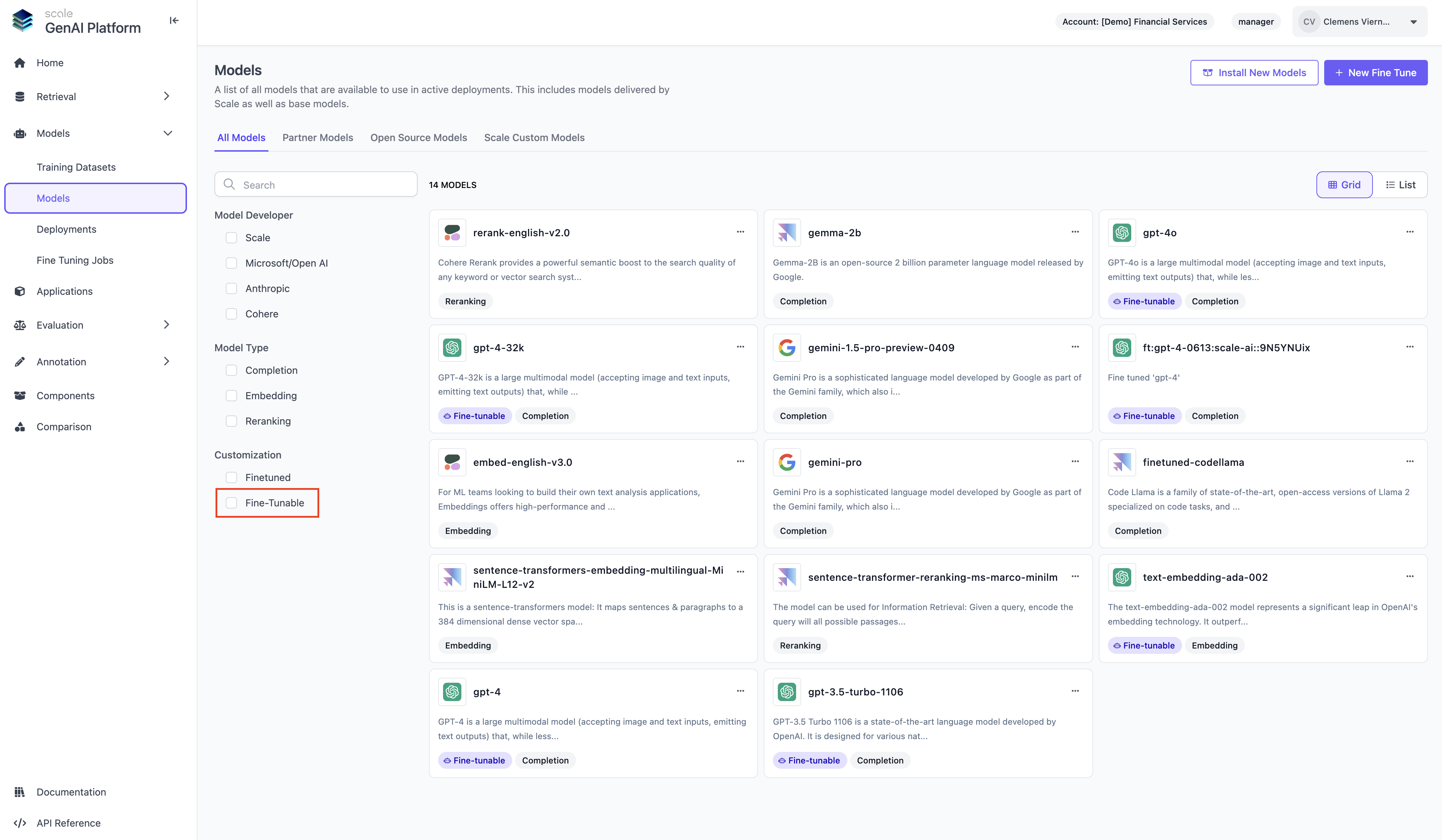
Supported Models for Fine Tuning
As of today (July 2024) we support only OpenAI models for fine tuning in Scale GP
Training Datasets
In order to be able to fine tune a model on the platform, you will need a training dataset. To create a new training dataset, navigate to "Training Datasets". A Training Dataset consists of a set of input and output pairs.
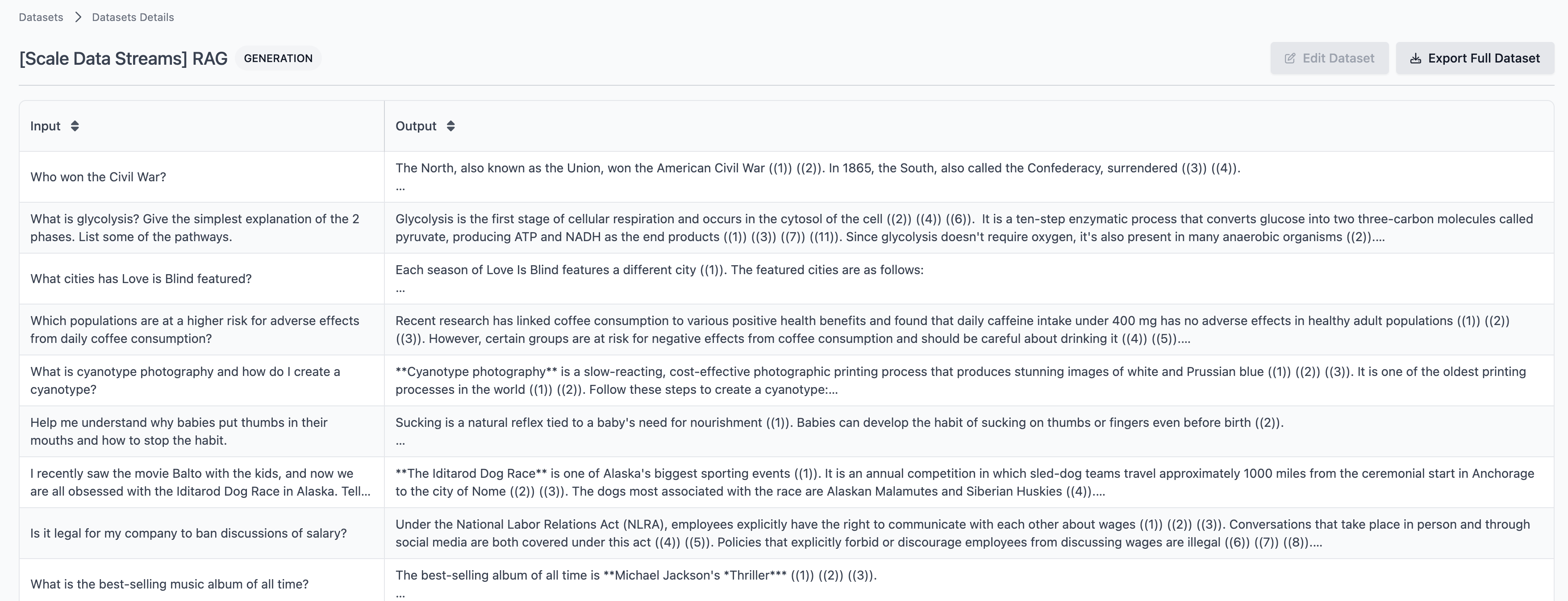
Scale GP typically comes with a few pre-installed training datasets for typical tasks like RAG, Coding or Creative Writing. If you have a local installation of Scale GP without pre-installed training datasets, please contact Scale to get these datasets installed in your account. While each use case is different, a fine-tuning dataset should include at least include a couple of hundred prompt response pairs in order to have a meaningful impact on model performance for the respective domain.
If you have a dataset of prompt response pairs ready to go, you can hit "New Dataset" and upload the dataset directly via the UI.
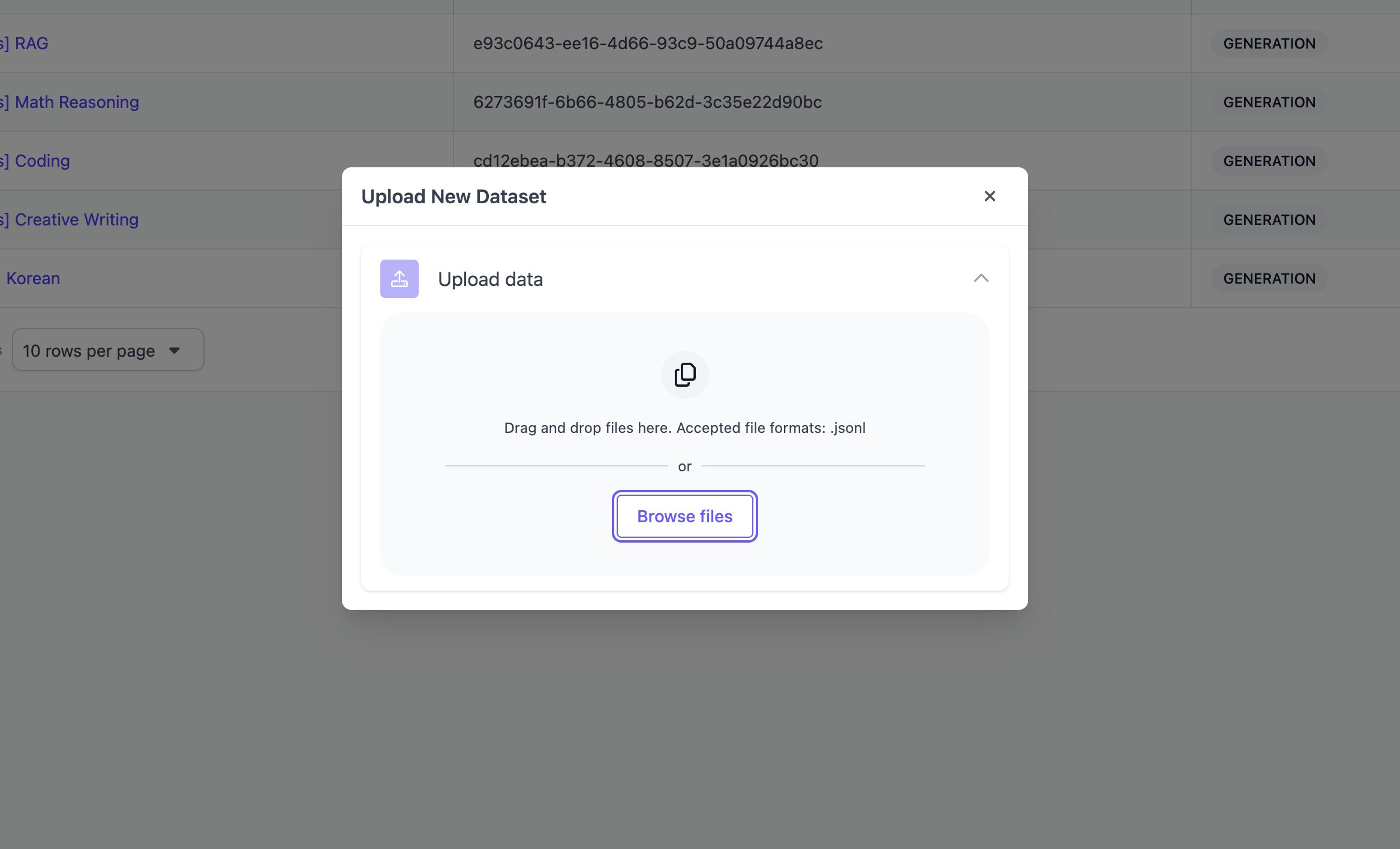
New Fine Tune
After deciding for a training dataset, you can navigate back to "Models" and click "New Fine Tune" in the top right to being a fine tuning job. Subsequently, you can simply walk through the steps in the wizard to create the fine tune by picking the model type, base model to fine-tune, providing a name (and optionally description) and finally selecting a training dataset.
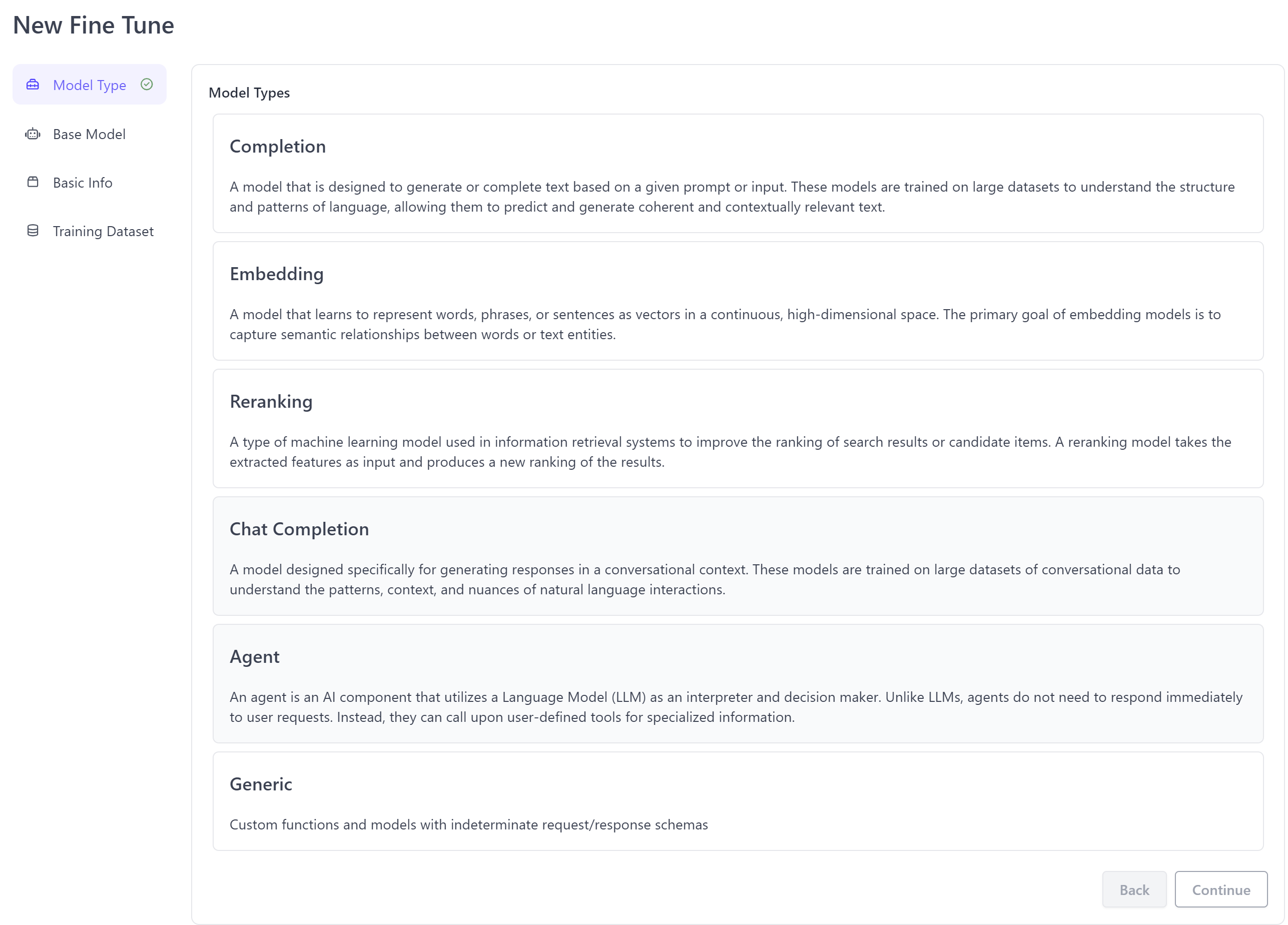
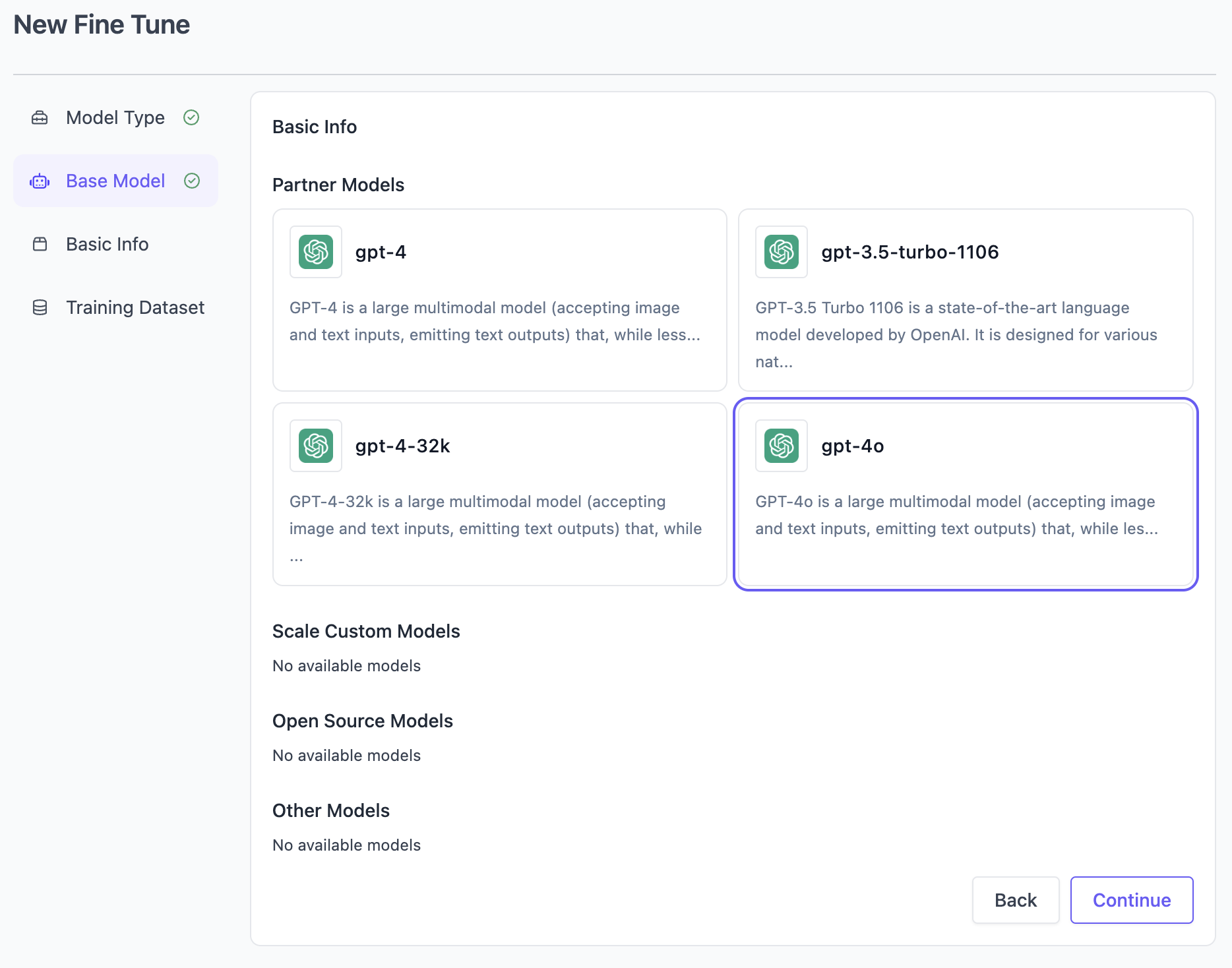
Fine Tuning Jobs
After completing the setup, you'll be able to monitor the status of the fine tuning job by navigating to "Fine-Tuning Jobs.

After the fine tuning job is completed, the fine-tuned model will appear in "Models" with a prefix of "ft:" and is ready to be used by the completion API or as part of an SGP application.
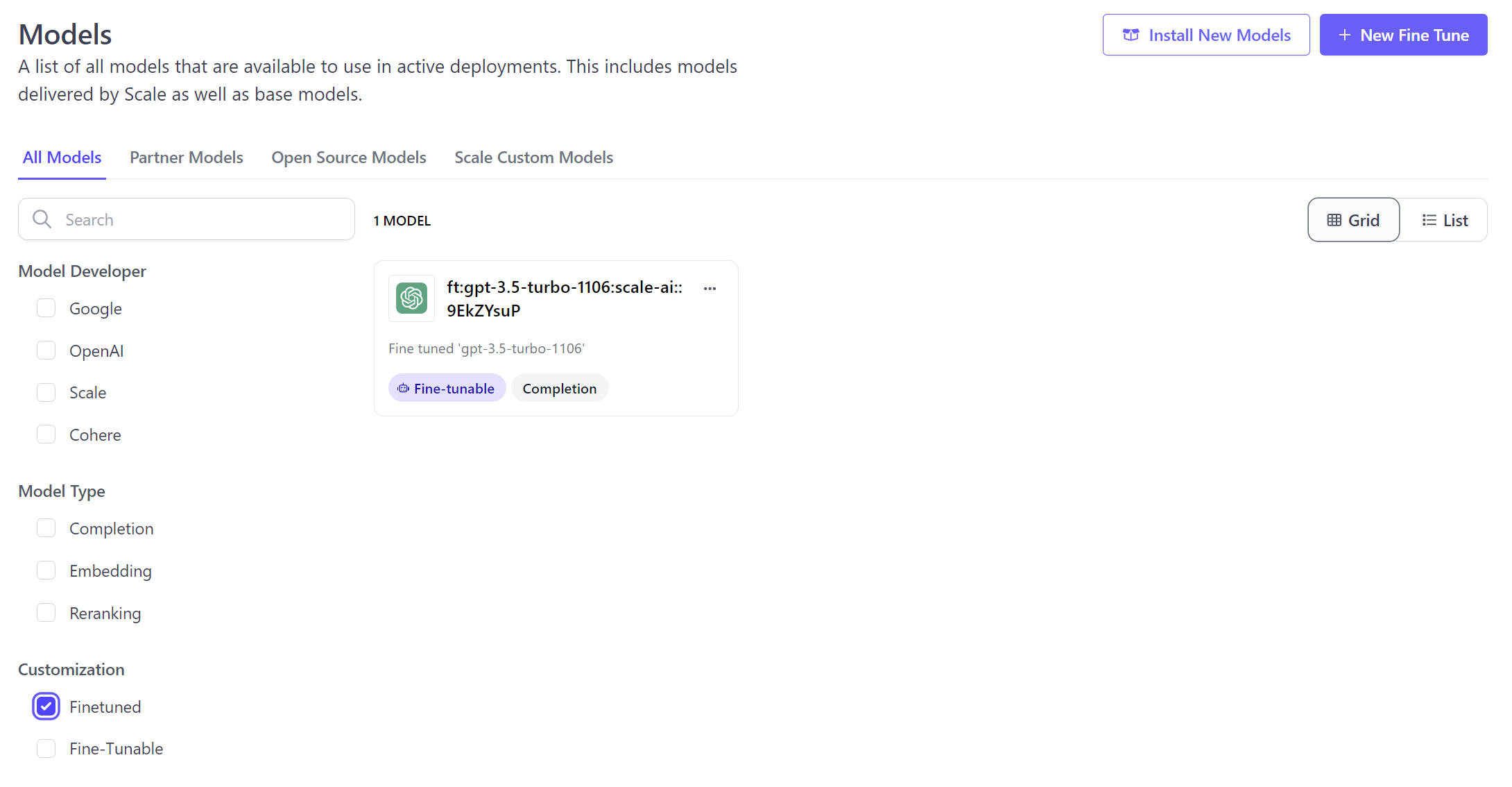
Using the API
You can also create new fine-tuning jobs directly using the SGP API, for details please refer to the API Reference.
Updated over 1 year ago